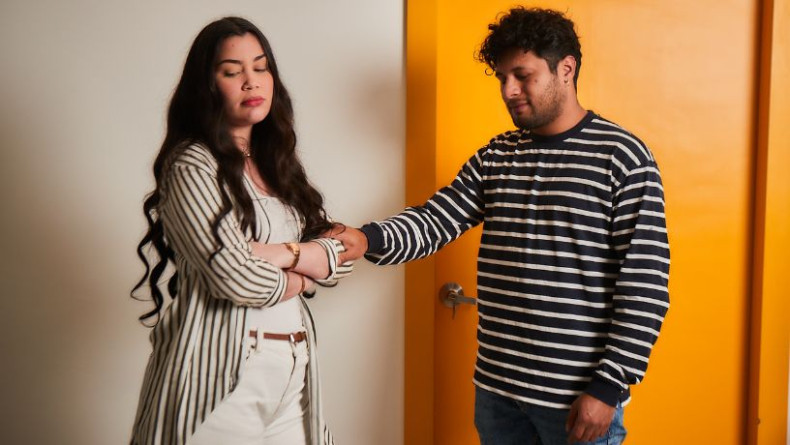
In our modern world, feeling abandoned or isolated can inflict deep emotional wounds that affect our relationships, self-esteem, and overall well-being. Abandonment wounds often emerge from past experiences of loss or rejection, triggering internal struggles and unhealthy coping mechanisms. This article is designed to address these painful emotions and provide you with five proven strategies to jumpstart your healing process. You will discover practical and actionable techniques rooted in the latest psychological research for 2023 and beyond, including self-compassion, professional support, and community building. If you have ever wondered ‘Cómo sanar tu herida de abandono’, read on to explore effective methods that empower your journey to recovery.
Understanding the Roots of Abandonment Wounds
Abandonment wounds are much more than just physical separation; they delve deep into our emotional inner world. These wounds typically begin in childhood, when feelings of being unwanted or neglected take root. The emotional impact of these early experiences can linger well into adulthood, shaping our inner dialogue and influencing how we interact in our relationships.
Modern psychology describes abandonment as a chronic feeling of loneliness and unworthiness that builds over time. Studies reveal that these wounds can significantly affect mental health, leading to issues such as anxiety, depression, and chronic stress. Recognizing the origin of these feelings is an essential first step in mapping out a personal roadmap to recovery.
It is vital to understand that the pain of abandonment is real and treatable. When left unaddressed, these wounds may lead to behaviors such as overattachment, fear of intimacy, or even emotional withdrawal. By acknowledging the profound influence of early experiences, you begin equipping yourself with the insights necessary to set forth on the healing journey.
Strategy 1: Embracing Self-Compassion and Mindfulness
Self-compassion and mindfulness are key tools for mending emotional wounds. These practices help you acknowledge your pain without judgment, paving the way for acceptance and a gradual healing process. Regular mindfulness practice can neutralize negative self-talk and foster a kinder, more patient relationship with yourself.
In 2023, abundant research continues to support the benefits of mindfulness, proving its effectiveness in reducing stress and anxiety. Self-compassion acts as a bridge between recognizing your emotional pain and taking active steps toward recovery. It is not about ignoring your feelings, but rather embracing them as a natural part of the human experience.
Some practical methods include guided meditation, journaling your thoughts, and practicing daily affirmations. By devoting a few minutes each day to soothe your inner critic, you can gradually shift your perspective. Below, we explore in depth some practical applications of these techniques.

Integrating Daily Mindfulness
Begin your day with a short period of reflection. Even five minutes of mindfulness meditation can set a positive tone, grounding you against internal triggers.
Apps like Headspace or Calm offer guided meditations that help you connect with your feelings, learn breathing techniques, and develop a non-judgmental attitude toward yourself.
Developing Self-Compassion Through Journaling
Keeping a journal can help uncover recurring patterns in your thoughts. Write regularly about moments when you feel abandoned or insecure, and reflect on these emotions.
Consider ending your entries with affirmations such as ‘I am worthy’ or ‘I deserve love’ to reframe negative self-beliefs. Over time, this practice can empower you to view yourself with greater kindness and acceptance.
Strategy 2: Seeking Professional Help and Therapeutic Guidance
At times, the impact of abandonment wounds is too deep to address alone, making professional mental health support indispensable. Therapy provides a safe space to explore and understand your emotional pain, while trained practitioners guide you through targeted interventions to promote healing.
Therapies such as Cognitive Behavioral Therapy (CBT) or Dialectical Behavior Therapy (DBT) are effective in restructuring harmful thought patterns. The insights gained from professional guidance can serve as a turning point on your journey to recovery.
It is important to find a therapist whose methods resonate with your needs. With the rise of online therapy, access to licensed professionals is now easier than ever. Here are some practical tips for making the most of your therapy sessions:
Finding the Right Therapist
Do thorough research and seek recommendations from trusted contacts. Look for professionals with credentials and specialties in trauma or abandonment issues.
Read reviews and, if possible, arrange an initial consultation to gauge whether the therapist’s approach aligns with your personal needs.
Maximizing Your Therapy Sessions
Prepare for each session by writing down your thoughts and emotions. This practice ensures you address important issues and do not overlook any triggers that have surfaced during the week.
Maintain honesty with your therapist about your experiences. The more transparent you are, the more tailored and effective their guidance will be, paving the way to breakthrough insights.

Strategy 3: Building a Supportive Network
A robust support system is a cornerstone of the healing process. Relationships with empathetic friends, family, or even members of supportive online communities can offer comfort and validation that of professional help. Emotional support from peers reminds you that you are not alone in your journey.
Building this network may involve reconnecting with old friends, joining support groups, or participating in community events. Trusted individuals can provide validation and fresh perspectives to help counter feelings of isolation and rejection.
Focus on surrounding yourself with people who either relate to your experiences or show genuine compassion. This community-based approach reinforces the idea that healing is not a linear process, and that recovery is enriched by meaningful relationships.
Strategy 4: Setting Healthy Boundaries and Cultivating Self-Reliance
Healing from abandonment wounds also involves establishing clear boundaries to protect your emotional well-being. Setting these limits not only shields you from further harm, but also reinforces your autonomy and self-respect. Healthy boundaries are vital to ensure you receive the respect you deserve.
Learn to say no and assert your needs within relationships. People with abandonment wounds often tend to overextend themselves or allow unhealthy dynamics out of fear of rejection. The empowerment achieved by asserting clear boundaries marks a significant step on the road to recovery.

Developing self-reliance goes hand in hand with boundary setting. By focusing on your personal growth and skills, you lessen dependency on external validation. Below are detailed insights into how you can cultivate these essential skills:
Techniques for Effective Boundary Setting
Begin with small steps by articulating your needs in low-pressure settings. Practicing with friends or supportive family members can help make this process feel more natural.
Use clear and assertive language when discussing your limits. Statements like ‘I need some time for myself’ or ‘I’m not comfortable with this situation’ can communicate your boundaries in a respectful yet firm manner.
Building Self-Reliance
Engage in activities that foster personal development—whether it’s learning a new skill, exploring a hobby, or simply dedicating time for self-reflection.
Self-reliance builds confidence and nurtures the inner strength needed to face challenging emotional moments. It reinforces that while external support is beneficial, the heart of your well-being comes from within.
Strategy 5: Engaging in Healing Activities and Creative Expression
Healing is not just a mental process; it is an emotional and creative journey as well. Many people find that engaging in creative activities like art, music, or writing helps reveal and soothe hidden emotional layers. These activities allow you to channel your feelings into productive and healing expressions.
Recent research from 2023 emphasizes the therapeutic benefits of creative expression, showing that it effectively reduces stress and enhances overall quality of life. Creative expression offers a unique way of communicating what sometimes words cannot express.
Complementing creative pursuits with physical activities—such as yoga or nature walks—can provide a well-rounded healing experience. Both your mind and body benefit when you integrate diverse healing practices. Below are some practical suggestions:
Conclusion and Key Takeaways
The journey to heal abandonment wounds is deeply personal and, at times, challenging, but it is ultimately a path toward reclaiming your emotional strength. Each of the strategies discussed—from cultivating self-compassion and seeking professional therapy to building a supportive network and engaging in creative expression—offers unique benefits for your recovery.
Despite moments when the process might feel overwhelming, remember that healing is marked by small, consistent steps. Each small, intentional step you take builds resilience and nurtures a healthier self-image.

As you navigate your healing journey, consider integrating these strategies into a personalized plan that meets your unique needs. Whether through mindfulness, setting clear boundaries, or creative therapy, provide yourself with the time and patience necessary to grow. Your story is one of strength and potential, and with dedicated self-care, you can overcome past wounds and build a future filled with self-love, trust, and compassion.
Content Additional
Además de las cinco estrategias comprobadas presentadas anteriormente, es importante conocer otros contextos y métodos complementarios para sanar las heridas de abandono. En la sociedad acelerada de hoy, las distracciones y el estrés son constantes, lo que hace aún más crucial invertir tiempo en rutinas de autocuidado.
Por ejemplo, reservar momentos para prácticas reflexivas como retiros de mindfulness o sesiones de desintoxicación durante el fin de semana puede complementar profundamente tu proceso de sanación. Incorporar técnicas de desintoxicación digital en tu rutina ayuda a minimizar las influencias negativas de las redes sociales y la conectividad constante. Estudios han demostrado que desconectarse incluso unas pocas horas al día mejora el ánimo, reduce la ansiedad y aumenta la satisfacción general de vida. Esta práctica refuerza los límites entre tu espacio personal y el ruido externo, permitiéndote alcanzar una mente más centrada y en paz.
Considera explorar modalidades holísticas como la acupuntura o el Reiki, que en 2023 han ganado reconocimiento por sus beneficios en la sanación tanto física como emocional. Estas terapias complementarias funcionan de la mano con los métodos psicológicos tradicionales, proporcionando una experiencia de sanación más integral, especialmente para quienes encuentran que la terapia hablada por sí sola no aborda por completo las manifestaciones somáticas del dolor emocional.
Otra técnica adicional consiste en participar en talleres grupales o círculos de sanación liderados por la comunidad. Estos encuentros ofrecen la oportunidad de compartir experiencias, escuchar las vivencias de otros y fomentar la empatía en un ambiente seguro. Ser parte de una comunidad que comprende y valida tus sentimientos puede ser enormemente terapéutico, pues a través de la vulnerabilidad compartida se inicia el proceso de reparar las heridas más profundas.
Healing from abandonment wounds is a multifaceted journey that requires self-awareness, concrete strategies, and dedication to personal growth. Each of the five approaches presented in this article—from practicing self-compassion to establishing healthy relationships and boundaries—offers unique benefits for your recovery. Remember, every small step toward healing matters. By incorporating these techniques into your daily life, you pave the way to greater resilience, self-love, and emotional freedom. Embrace your healing journey with patience and understanding, knowing that progress is gradual and every breakthrough is significant. Let these strategies serve as your guide to a more confident, balanced, and compassionate life.




